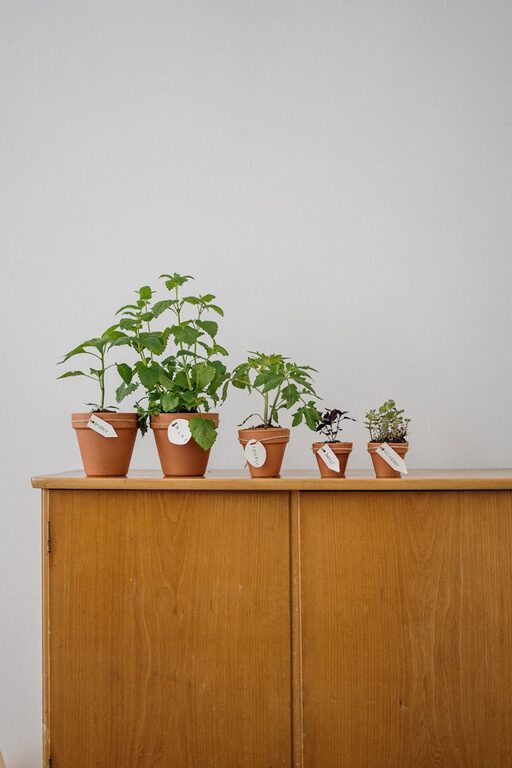
How to Start a Small Herb Garden Indoors: A Beginner’s Guide
Growing your own herbs indoors is a rewarding and practical way to bring fresh flavors to your cooking while brightening up your home. Whether you have a spacious kitchen or just a sunny windowsill, starting a small indoor herb garden is simple and enjoyable. This guide will walk you through everything you need to know to begin your indoor herb adventure.
Why Grow Herbs Indoors?
Indoor herb gardens offer several benefits:
– Freshness: Pick herbs as needed, ensuring maximum flavor.
– Convenience: No need to rush to the store or worry about seasonal availability.
– Aesthetics: Green plants add life and color to your living spaces.
– Air quality: Some herbs can help improve indoor air quality.
– Cost-effective: Saves money over buying fresh herbs regularly.
Choosing the Right Herbs for Indoors
Not all herbs thrive indoors equally well. Some popular and easy-to-grow options include:
– Basil: Loves bright light and warmth.
– Parsley: Prefers moderate sunlight.
– Chives: Hardy and adaptable.
– Mint: Grows quickly but can spread aggressively.
– Thyme: Needs well-draining soil and plenty of light.
– Oregano: Thrives in sunny conditions.
– Cilantro: Likes cooler temperatures and bright light.
Consider your cooking preferences and available light when selecting herbs.
Step 1: Gather Supplies
To get started, you’ll need:
– Containers: Pots with drainage holes are best, about 4-6 inches wide.
– Quality potting soil: Choose a well-draining mix suitable for herbs.
– Seeds or starter plants: Beginners often find starter plants easier than seeds.
– Watering can or spray bottle
– Light source: A sunny south-facing window or grow lights if natural light is limited.
– Labels (optional): To keep track of your herbs.
Step 2: Selecting the Right Location
Herbs need plenty of light to grow strong and flavorful.
– Windowsill: South or southwest-facing windows provide the best natural light.
– Grow lights: Use LED or fluorescent grow lights for 10-12 hours a day if your window isn’t bright enough.
– Avoid drafts and temperature fluctuations, especially near heating vents or air conditioners.
Step 3: Planting Your Herb Garden
Using Starter Plants
- Fill your pots with potting soil, leaving about an inch of space at the top.
- Remove the starter plants gently from their nursery pots.
- Plant them at the same depth as they were in their original containers.
- Water gently but thoroughly.
- Fill containers with potting soil.
- Sprinkle seeds according to seed packet instructions.
- Cover lightly with soil.
- Mist the soil to moisten.
- Keep the soil consistently moist until seeds germinate.
- Thin seedlings if necessary to avoid overcrowding.
Starting from Seeds
Step 4: Watering and Feeding Your Herbs
– Watering: Most herbs prefer the soil to dry slightly between waterings. Avoid overwatering, which can cause root rot.
– Feeding: Use a balanced, water-soluble fertilizer diluted to half strength every 4-6 weeks during the growing season.
– Drainage: Make sure excess water drains to prevent soggy soil.
Step 5: Pruning and Harvesting
– Regular trimming encourages bushy, healthy growth.
– Use clean scissors to snip the herbs just above a set of leaves.
– Harvest in the morning when oils are most concentrated.
– Avoid cutting more than one-third of the plant at a time.
Troubleshooting Common Issues
– Leggy plants: Usually caused by insufficient light. Move herbs to brighter spots or add grow lights.
– Yellow leaves: May signal overwatering or nutrient deficiencies.
– Pests: Occasionally, you may see aphids or spider mites. Wipe leaves with a mild soapy water solution and improve air circulation.
– Slow growth: Check light, soil quality, and watering habits.
Additional Tips for Success
– Rotate pots occasionally to encourage even growth.
– Use saucers under pots to catch excess water.
– Group herbs with similar light and watering needs.
– Experiment with unusual herbs like lemon balm or sage for variety.
—
Starting a small herb garden indoors is a fun and satisfying project suitable for all skill levels. With just a little effort, you’ll have fresh herbs at your fingertips, enhancing your meals and your space. Happy gardening!
